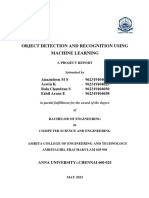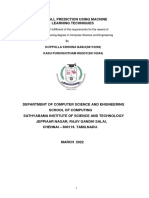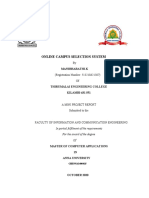0% found this document useful (0 votes)
7 views6 pagesMajor Project First Part
This major project report focuses on the simulation of a Vehicle to Grid (V2G) system analysis for a full day, exploring the integration of electric vehicles with renewable energy sources. It includes a case study assessing the impact of solar shading on energy production and the services EV owners can provide to the power grid. The project is submitted by a group of students from the Department of Electrical and Electronics Engineering at Kamala Institute of Technology and Science under the guidance of Mrs. V. Supritha.
Uploaded by
akhilsaikoyyadaCopyright
© © All Rights Reserved
We take content rights seriously. If you suspect this is your content, claim it here.
Available Formats
Download as DOCX, PDF, TXT or read online on Scribd
0% found this document useful (0 votes)
7 views6 pagesMajor Project First Part
This major project report focuses on the simulation of a Vehicle to Grid (V2G) system analysis for a full day, exploring the integration of electric vehicles with renewable energy sources. It includes a case study assessing the impact of solar shading on energy production and the services EV owners can provide to the power grid. The project is submitted by a group of students from the Department of Electrical and Electronics Engineering at Kamala Institute of Technology and Science under the guidance of Mrs. V. Supritha.
Uploaded by
akhilsaikoyyadaCopyright
© © All Rights Reserved
We take content rights seriously. If you suspect this is your content, claim it here.
Available Formats
Download as DOCX, PDF, TXT or read online on Scribd
/ 6






















































































